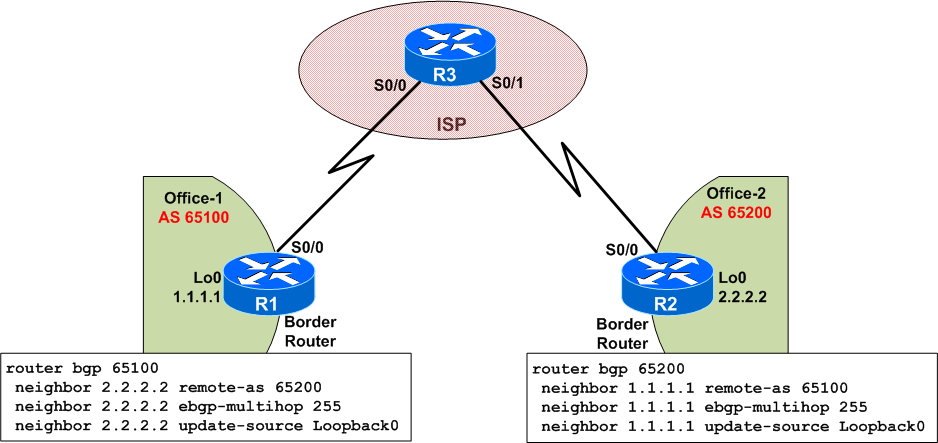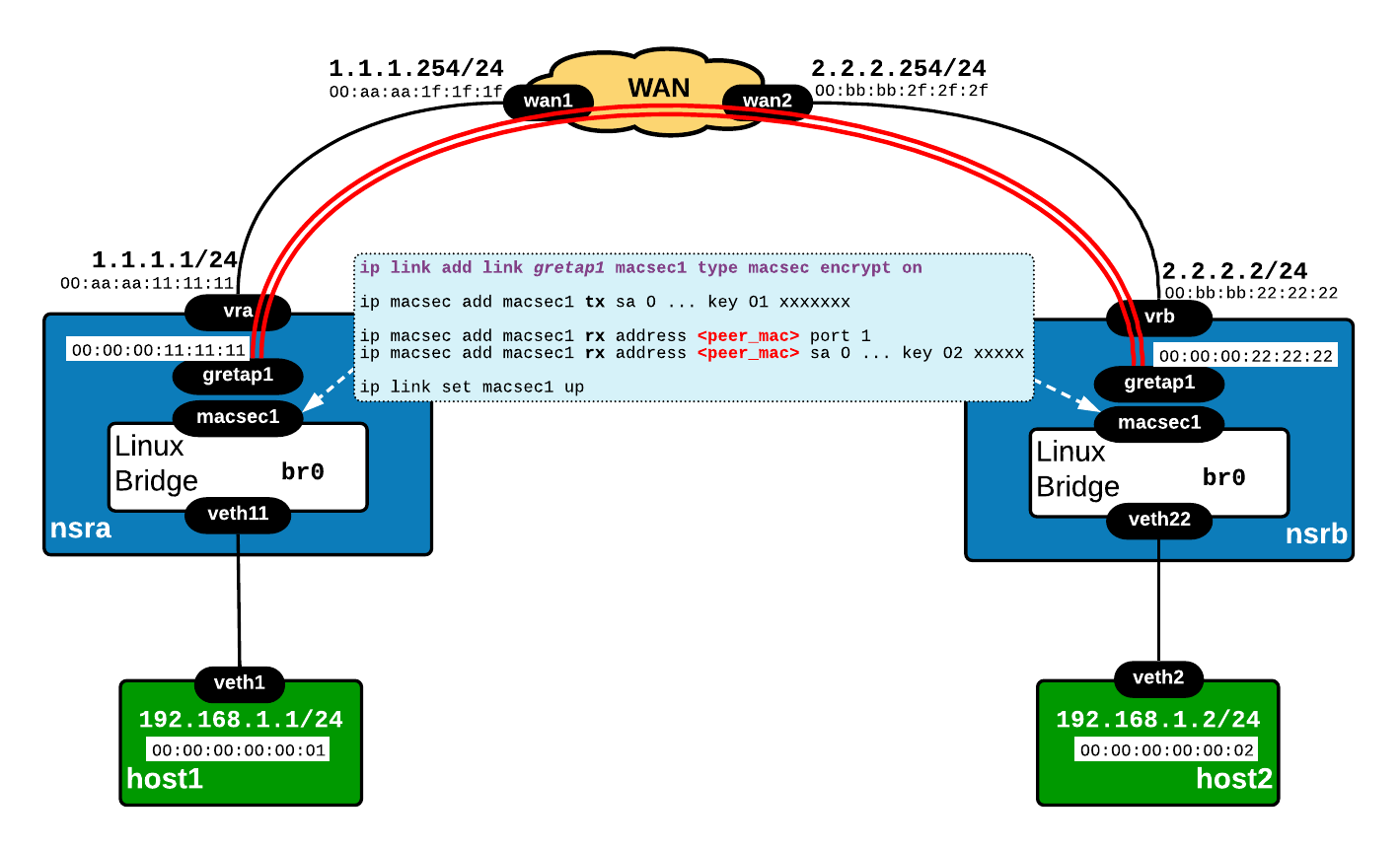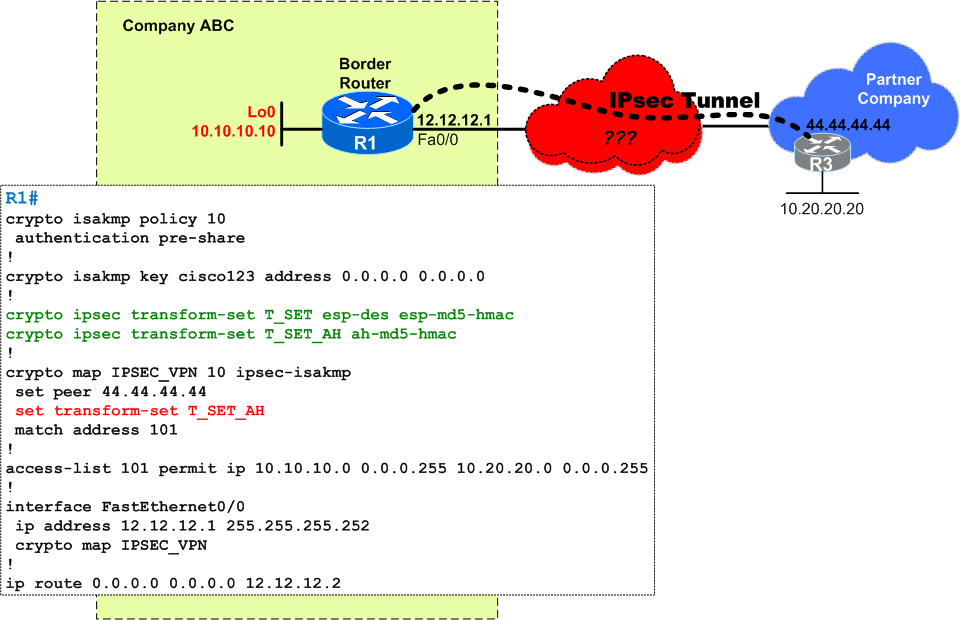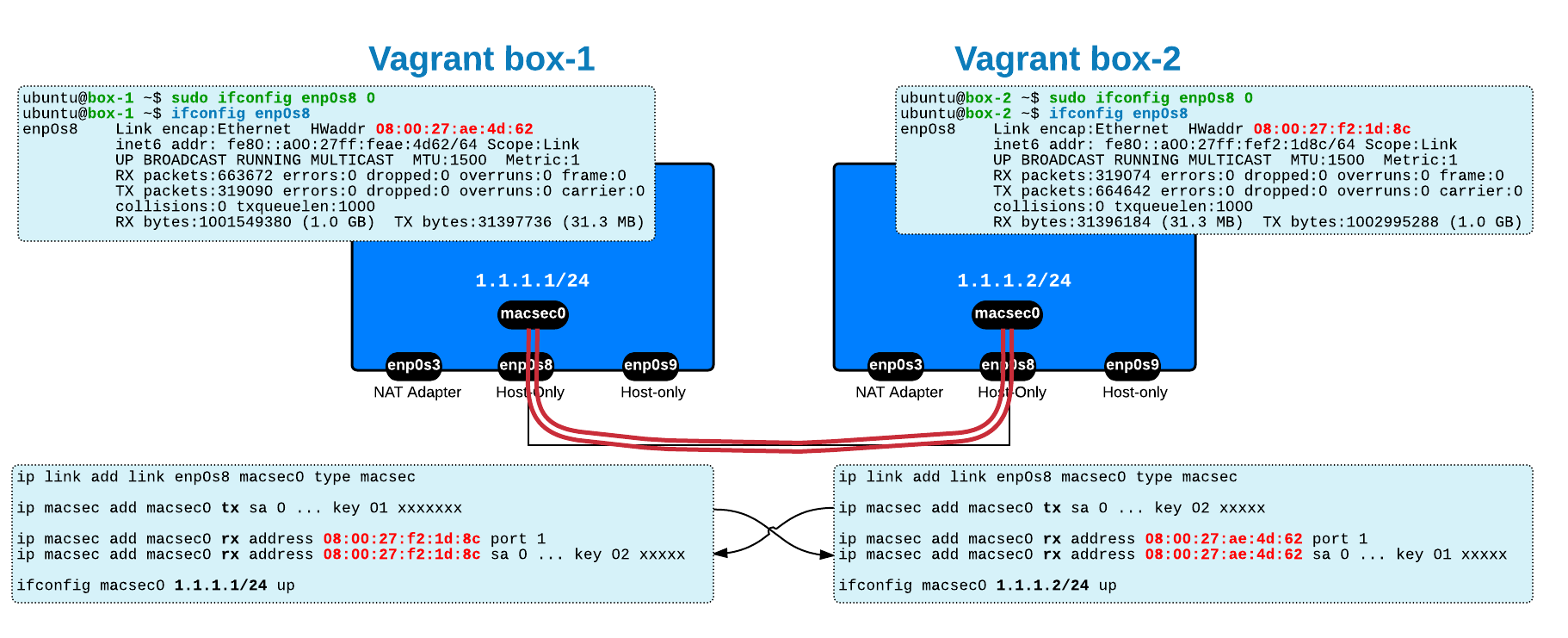Your company has more offices and each of them has a separate internet connection. The default route for each office points towards the ISP. Also, within each office you run iBGP using private AS numbers.
In the below diagram, you have Office-1 running AS 65100 and Office-2 running AS 65200.
You have been asked to configure an eBGP peering between Office-1 and Office-2. You did that by establishing a BGP session, using each border routers' loopbacks (as shown below).
Soon, you notice that the new eBGP peering does not come up. You perform the following troubleshooting:
Office-1#sh ip bgp summ BGP router identifier 1.1.1.1, local AS number 65100 BGP table version is 1, main routing table version 1 Neighbor V AS MsgRcvd MsgSent TblVer InQ OutQ Up/Down State/PfxRcd2.2.2.2 4 65200 0 0 0 0 0 never Active Office-1# Office-1# Office-1#ping 2.2.2.2 source lo0 Type escape sequence to abort. Sending 5, 100-byte ICMP Echos to 2.2.2.2, timeout is 2 seconds: Packet sent with a source address of 1.1.1.1 !!!!! Success rate is 100 percent (5/5), round-trip min/avg/max = 1/16/56 ms Office-1# Office-1# Office-1# Office-1#traceroute 2.2.2.2 source lo0 Type escape sequence to abort. Tracing the route to 2.2.2.2 1 155.1.1.2 4 msec 4 msec 16 msec 2 155.2.2.1 32 msec * 52 msec Office-1# Office-1# Office-1# Office-1#sh ip cef 2.2.2.2 0.0.0.0/0, version 9, epoch 0, cached adjacency to Serial0/0 0 packets, 0 bytes via 155.1.1.2, 0 dependencies, recursive next hop 155.1.1.2, Serial0/0 via 155.1.1.0/30 valid cached adjacency
As you can see, you can ping each others' loopback, but the BGP does not come up.
Note that Office-2 Border Router displays similar output
What is the problem ?
Post your solution in the 'Comments' section below and subscribe to this blog to get the solution and more interesting quizzes.






 Costi is a network and security engineer with over 10 years of experience in multi-vendor environments. He holds a CCIE Routing and Switching certification and is currently pursuing same expert-level certifications in other areas. He believes that the best way to learn and understand networking topics is to challenge yourself to fix different problems, production-wise or lab-type exams. He also enjoys teaching networking and security technologies, whevever there is an opportunity for it.
Costi is a network and security engineer with over 10 years of experience in multi-vendor environments. He holds a CCIE Routing and Switching certification and is currently pursuing same expert-level certifications in other areas. He believes that the best way to learn and understand networking topics is to challenge yourself to fix different problems, production-wise or lab-type exams. He also enjoys teaching networking and security technologies, whevever there is an opportunity for it.

Comments
comments powered by Disqus